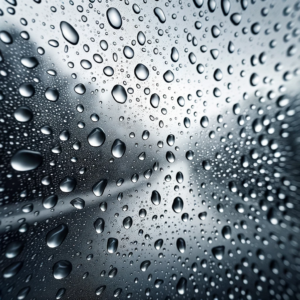Harnessing the Power of Hydrophobic Coatings: Repelling Water and Unleashing Innovation
In a world where water can be both a life-giving force and a destructive element, the emergence of hydrophobic coatings has introduced a remarkable solution to repelling water and protecting various surfaces. Hydrophobic coatings, driven by advanced nanotechnology, have transformed the way we interact with materials, offering a range of benefits from water resistance to enhanced durability and countless innovative applications. In this article, we will delve into the science, applications, and advantages of hydrophobic coatings.
The Science Behind Hydrophobic Coatings
At the heart of hydrophobic coatings is the concept of water resistance. These coatings are engineered using nanotechnology, a discipline that focuses on manipulating materials at the nanoscale to achieve extraordinary properties. Hydrophobic coatings employ nanoparticles to create a surface that actively repels water. The term “hydrophobic” literally means “afraid of water,” and these coatings live up to their name by creating a barrier that pushes water away.
One of the key materials used in hydrophobic coatings is silicon dioxide, which forms a microscopically rough surface on the material. When water comes into contact with this rough surface, it is repelled, preventing it from wetting the surface. This effect, known as the Lotus Effect, is named after the lotus leaf, which has a natural hydrophobic surface that causes water to bead up and roll off.
Diverse Applications
The versatility of hydrophobic coatings has led to their integration into various industries, revolutionizing how we approach numerous tasks and products.
-

Hydrophobic Coatings on Windows of a car
Consumer Electronics: The application of hydrophobic coatings to electronic devices like smartphones, tablets, and cameras has become commonplace. These coatings protect sensitive components from water damage and moisture, making our devices more resilient.
- Automotive Industry: Hydrophobic coatings are used on car windshields, windows, and exteriors. They create a water-repellent surface, enhancing visibility during rainy weather and making it easier to maintain a clean and clear windshield.
- Textiles and Clothing: Clothing, footwear, and outdoor gear now feature hydrophobic coatings that resist water, mud, and stains. This technology ensures that we stay dry and comfortable in wet conditions.
- Construction: Hydrophobic coatings are applied to building materials, such as concrete and stone, to prevent water penetration. This helps protect structures from water damage and extends their lifespan.
- Marine and Aerospace: In these industries, hydrophobic coatings are used on the exteriors of ships and aircraft to reduce water resistance and enhance fuel efficiency.
- Healthcare: Medical devices and equipment often feature hydrophobic coatings, which aid in preventing the buildup of biological materials and contaminants.
- Household Items: Everyday products like cooking pans and glassware are coated with hydrophobic materials to prevent sticking and make cleaning easier.
The Advantages of Hydrophobic Coatings
The adoption of hydrophobic coatings brings a multitude of benefits, making them a valuable addition to various sectors:
- Water Resistance: The primary benefit is the ability to repel water, which not only prevents damage but also improves the lifespan of coated items.
- Enhanced Durability: Coated materials are less susceptible to wear and tear, leading to reduced maintenance and replacement costs.
- Energy Efficiency: Hydrophobic coatings applied to surfaces like glass and metals can reduce drag, which is particularly valuable in industries like automotive and aerospace, where fuel efficiency is critical.
- Easy Cleaning: These coatings reduce the adhesion of dirt, grime, and contaminants, making cleaning more efficient and requiring fewer cleaning products.
- Improved Safety: In applications like automotive and construction, hydrophobic coatings enhance visibility and prevent accidents by ensuring water does not accumulate on surfaces.
Caring for Hydrophobic Coatings
While hydrophobic coatings offer impressive benefits, they are not permanent and can wear off over time. To maintain their effectiveness, consider the following tips:
- Gentle Cleaning: Use mild detergents and soft materials when cleaning coated surfaces to avoid damage.
- Reapplication: In some cases, hydrophobic coatings can be reapplied to rejuvenate their water-repellent properties.
- Follow Manufacturer Instructions: Always follow the care and maintenance guidelines provided by the manufacturer for specific items.
In conclusion, hydrophobic coatings represent a groundbreaking technological advancement that has impacted numerous industries and our daily lives. They offer an effective solution to water resistance, enhancing the durability and performance of various materials and surfaces. As nanotechnology continues to evolve, we can expect even more innovative applications and further improvements in hydrophobic coatings, ushering in a new era of water-repellent and innovative solutions.
Have any questions or share your expertise for Hydrophobic Coatings
Join the conversation!



Plaats een Reactie
Meepraten?Draag gerust bij!